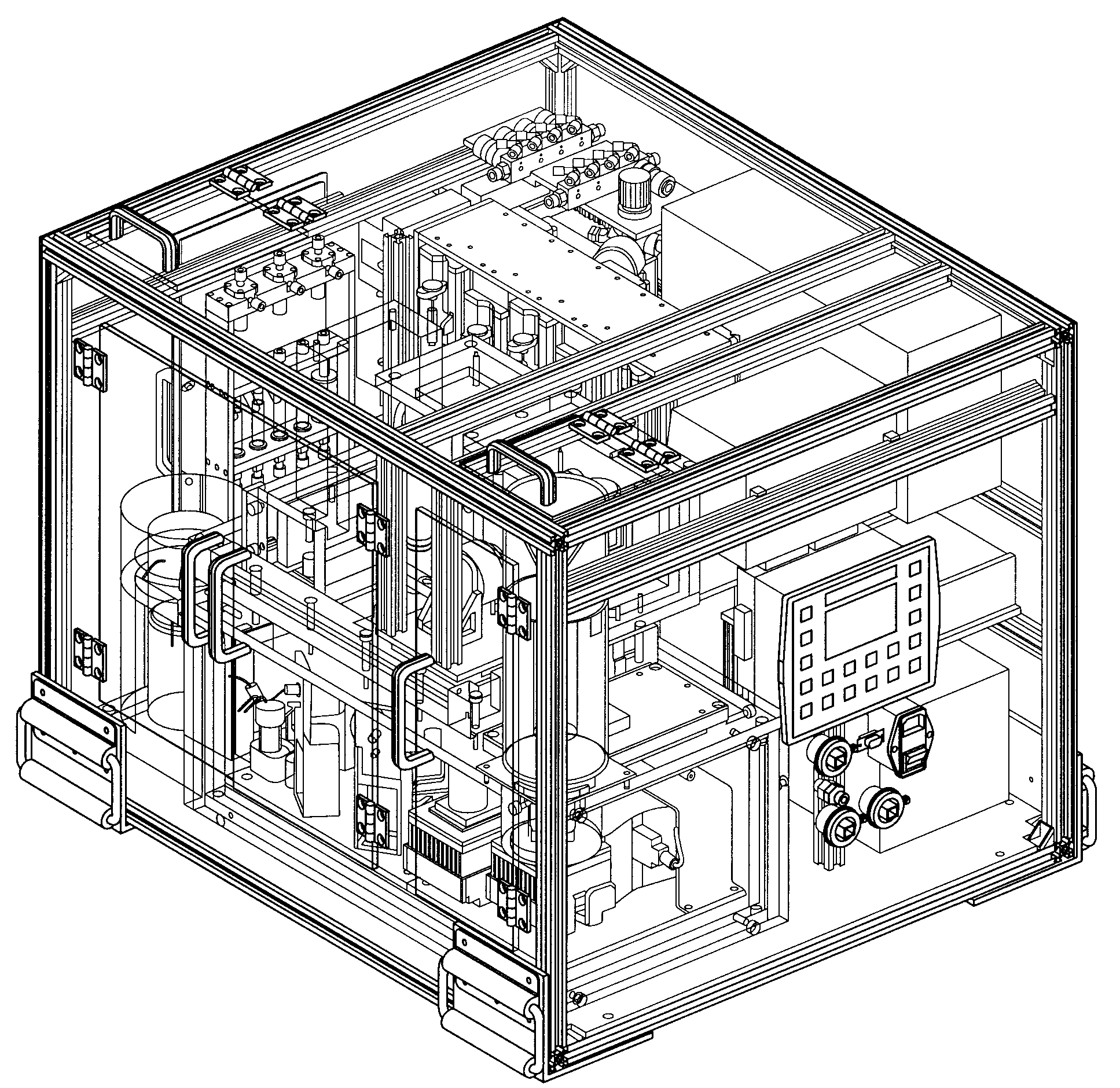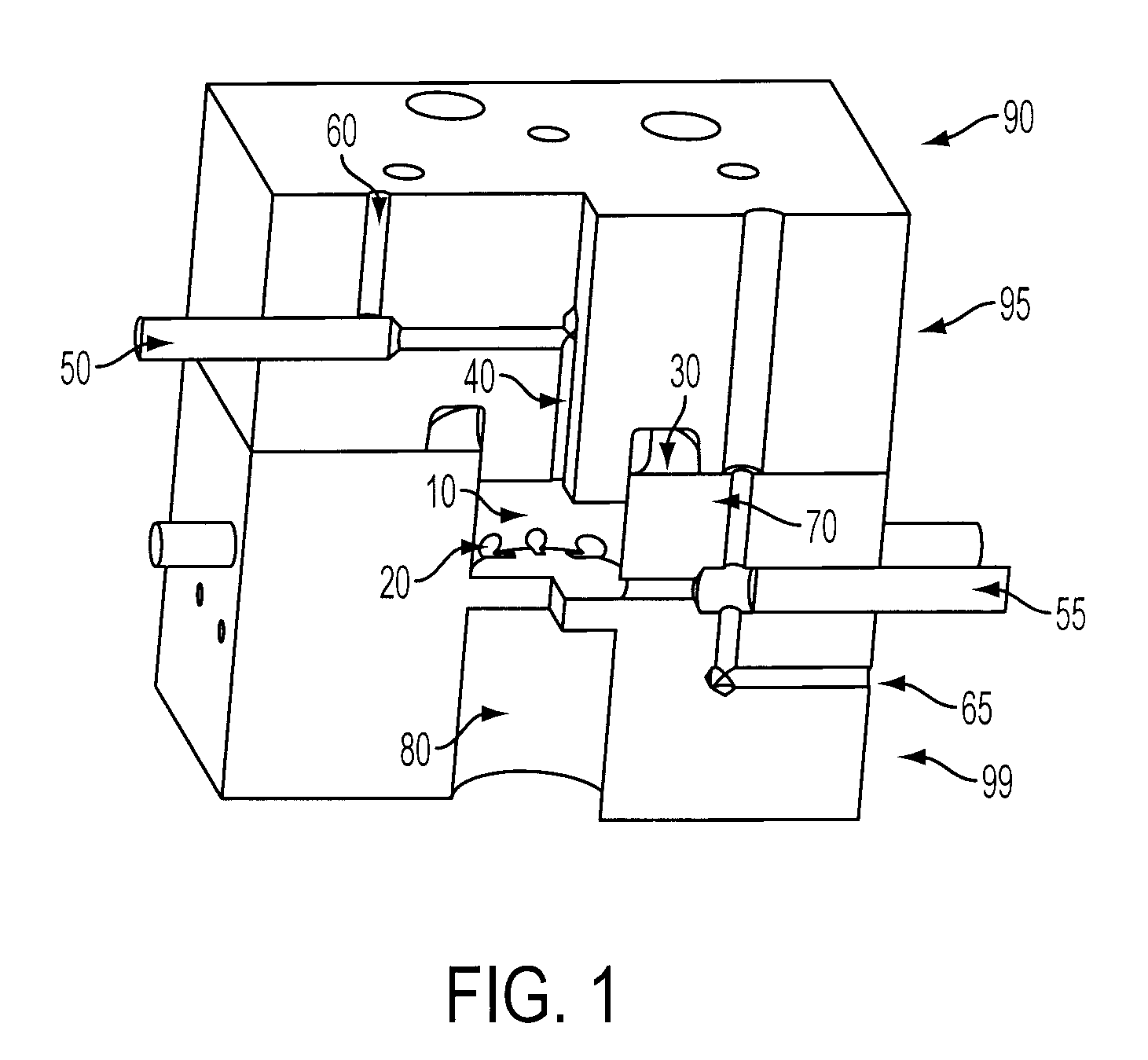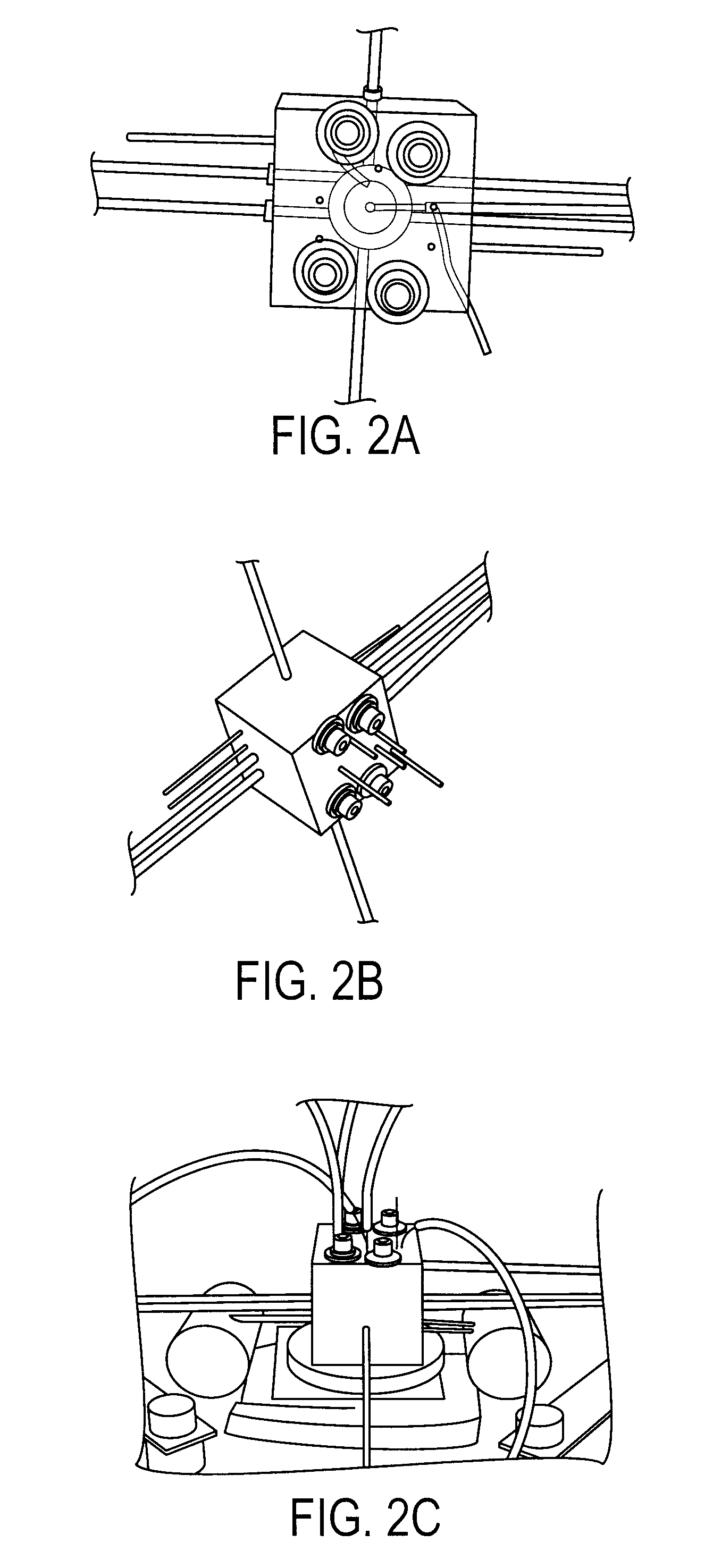Microfluidic radiosynthesis system for positron emission tomography biomarkers
a radiosynthesis system and positron emission tomography technology, applied in the field of microfluidic devices, can solve the problems of large space occupation of synthesis modules, difficult modification of modules for research and development of new compounds and probes, and longer reaction time cycles in chemical processes, etc., to achieve faster, efficient and compact manner, and reduce the amount of precursors. , the effect of increasing the yield
- Summary
- Abstract
- Description
- Claims
- Application Information
AI Technical Summary
Benefits of technology
Problems solved by technology
Method used
Image
Examples
example embodiment
Purification and formulation systems
[0252]FIGS. 23 to 27 illustrate the various components and steps that are involved in purification and formulation in accordance with example embodiments of the present invention. These systems can be incorporated into the same instrument as the synthesis or following the modular design approach can be packaged into a separate instrument that is complementary to the synthesis instrument. FIG. 23(A) illustrates an exemplary diagram for transferring a sample from chip to the sample loading loop. The sample loading valve of FIG. 23(A) is in loading position. FIG. 23(B) illustrates the injection of the sample from sample loading loop to C18 column (or any other HPLC column). The sample loading valve of FIG. 23(B) is in inject position. Accordingly, the sample components are separated in the C18 column and detected with radiation and UV detection system sequentially. Desired sample fraction may be collected while the rest may be treated as waste. In an...
PUM
| Property | Measurement | Unit |
|---|---|---|
| physical size | aaaaa | aaaaa |
| diameter | aaaaa | aaaaa |
| volume | aaaaa | aaaaa |
Abstract
Description
Claims
Application Information
 Login to View More
Login to View More - R&D
- Intellectual Property
- Life Sciences
- Materials
- Tech Scout
- Unparalleled Data Quality
- Higher Quality Content
- 60% Fewer Hallucinations
Browse by: Latest US Patents, China's latest patents, Technical Efficacy Thesaurus, Application Domain, Technology Topic, Popular Technical Reports.
© 2025 PatSnap. All rights reserved.Legal|Privacy policy|Modern Slavery Act Transparency Statement|Sitemap|About US| Contact US: help@patsnap.com



